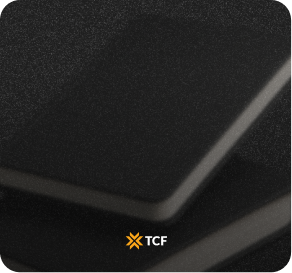Before any product gets the “Managed by TCF Team” badge, it goes through a detailed review process. TCF receives a constant stream of pitches from creators eager to launch their ideas, but only a select few move forward.
To learn how that process actually works, I sat down with Babken, Senior Business Development Specialist at TCF. With over four years of experience and more than 200 campaigns under his belt, he’s seen every version of a product pitch, from early concepts to fully formed innovations.
In this conversation, he breaks down TCF’s evaluation system, how data shapes their decisions, and what founders should focus on before pitching their product.
Jasmine: What are the main factors you look at when deciding which projects to take on?
Babken: We get lots of inquiries every month from creators across different industries. Some are ready to launch, while others are still refining their ideas.
And with so many products coming our way, we’ve learned to look for the ones that truly stand out. Our mission is to help innovative creators bring their products to life and to make sure they have all the tools they need for a successful launch.
When we evaluate a project, two things matter most:
- Innovation: we focus on products that introduce something genuinely new.
- Data that supports potential: not abstract excitement, but numbers that show the product can scale.
We want to help creators identify their product’s potential early on to better understand the scale of the campaign as well as the needed resources and activities to make it successful.
That’s why we created Prelaunch.com to help creators understand how prepared both they and the market are for a launch.
Jasmine: How important of a factor is having a prototype when you’re evaluating a project?
Babken: Very important. It doesn’t need to be 100% finished, but we usually expect an 80%-ready prototype.
If you claim your product has ten features and eight of them are already functional while two still need refinement, that’s normal. Crowdfunding is meant for that stage, to raise funds and finalize development.
But there must be proof that the product can realistically work and be manufactured at the proposed price.
Jasmine: How much weight does the marketing budget carry when you’re evaluating a campaign?
Babken: A marketing budget is essential. Visibility is what drives success, no matter how strong the product itself may be.
For creators without substantial personal resources, outside investment is always an option. That process becomes much easier when there is proof to support the idea. A small initial investment in validation can generate the kind of data investors look for — real numbers that demonstrate market interest and traction.
Once those results are in place, it becomes far more realistic to secure additional funding. During the campaign, TCF also helps connect creators with the right partner to expand their budget and scale the campaign effectively.
Jasmine: And for creators wondering how much budget they should plan for, what does that typically look like?
Babken: It depends on the scale of the campaign, but there’s a general benchmark. In our full management model, campaigns usually allocate around 15% of their total raise to marketing. That number comes from years of performance data across dozens of projects. On average, full campaigns TCF manages achieve a return of 7-8 times their marketing spend, nearly double what most successful crowdfunding projects see.
Jasmine: How do you balance data with intuition when deciding which projects to take on?
Babken: Data always leads the way. We might admire a creator’s idea or feel that a product looks promising, but personal impressions can be misleading. What really matters is how the market responds.
That’s why we rely on real consumer insights to understand how ready a product and audience actually are. These metrics strip away bias and show reality before any major decisions are made.
Intuition still matters, especially when spotting something that challenges patterns or could open a new niche. But at the end of the day, it’s data that keeps those instincts grounded. That balance helps us choose projects with real potential.
Jasmine: Does TCF focus mainly on specific industries, or are all categories on the table?
Babken: We focus primarily on physical consumer products, but beyond that, what really matters is innovation.
We keep an open mind about industries. Some categories are traditionally stronger in crowdfunding, while others don’t perform as well. But that doesn’t automatically disqualify a project. If we see data and innovation that suggest breakthrough potential, we’ll explore it. Sometimes that’s how entirely new niches get built: one campaign proves it can work, and others follow.
Jasmine: Can you give an example of that kind of turnaround?
Babken: Sure. Oculis Lodge is a perfect example. Hospitality-related projects like hotels, lodges, and travel experiences were never seen as a popular niche in the crowdfunding market. The category had little history of success, and creators generally avoided it. On top of that, the campaign launched in December, which is usually considered a slow month.
But Oculis Lodge changed that. Their team had a clear vision and a pretty successful launch. They managed to raise around $100K but struggled to scale the campaign. Based on the initial success we decided to manage the campaign, and with our hands on management approach iit went on to raise $1.2 million. That single success reshaped how creators saw the category. After Oculis Lodge, we started seeing more hospitality projects come to crowdfunding platforms, inspired by that result.
Jasmine: For creators who want to work with TCF, what’s the best advice you can give?
Babken: Be data-driven from the start.
Understand your potential customers, their needs, pain points, and motivations, and build your product around that, not around your own preferences.
You’re creating for the market. The more you understand your audience, the better your chances of building something that truly connects and succeeds.
Conclusion
From hundreds of pitches each month, only a handful move forward. Not because others lack ambition, but because TCF’s selection process centers on evidence. As Babken explained, innovation opens the door, but proof is what gets you through it. Data shows whether an idea can scale, a prototype confirms it can be built, and a marketing plan ensures it can reach people.
For creators hoping to partner with TCF, the takeaway is clear. Bring a product that solves a real need, back it up with numbers, and stay open to learning from the data. That’s what separates an idea from a launch that truly works.
[[cta2]]






.png)


.png)



